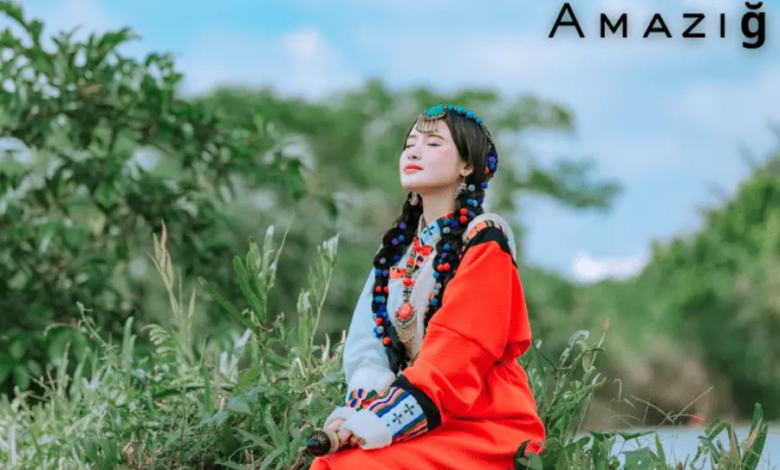Discovering Amaziɣ Heritage: An In-Depth Look at North Africa’s Indigenous Culture

Discovering the Amaziɣ Heritage: A Journey Through Time and Culture
North Africa is renowned for its rich and varied history, but one of its most vibrant and enduring cultures is that of the Amaziɣ people. Often known as Berbers, the Amaziɣ have contributed a unique thread to the region’s cultural tapestry through their colorful traditions, captivating stories, and deep-rooted beliefs. Their culture, characterized by resilience and a profound connection to nature, offers a treasure trove of wisdom that continues to inspire. Join us as we delve into the enchanting world of Amaziɣ heritage, exploring their history, cultural practices, and the modern challenges they face.
Unveiling the Origins and Historical Journey of the Amaziɣ
The Amaziɣ people have called North Africa home for thousands of years, with their origins stretching back to ancient times. Archaeological and linguistic evidence points to them being among the earliest inhabitants of the region. Their languages, which belong to the Afro-Asiatic family, reflect a deep historical bond with the land.
Throughout history, the Amaziɣ have encountered various influences from empires and cultures, including the Romans and Arabs. Despite these external pressures, they have managed to preserve their distinctive identity and traditions. Today, their heritage is celebrated through art, music, and oral storytelling, showcasing their enduring legacy in North Africa’s cultural mosaic.
The Rich Traditions and Spiritual Beliefs of the Amaziɣ
Amaziɣ culture is distinguished by its vibrant traditions and spiritual practices. Music plays a pivotal role, with rhythmic melodies from instruments like the guembri and bendir infusing energy into celebrations and rituals. Their art is equally impressive, featuring intricate woodwork, pottery, and textiles adorned with symbols of protection and fertility.
Spirituality is deeply embedded in their daily lives. Many Amaziɣ practice animism, holding a belief that spirits reside in natural elements such as rivers and mountains. This respect for nature promotes a sustainable way of living. Family ties are strong, with elders imparting wisdom and values to younger generations, reinforcing a sense of unity and continuity.
The Amaziɣ Influence on North African Culture
The Amaziɣ have left an indelible mark on North African culture. Their languages, such as Tamazight and Tarifit, enrich the linguistic landscape of countries like Morocco and Algeria. Traditional culinary practices, including tagines and couscous, highlight their gastronomic heritage.
Amaziɣ artistry is also noteworthy, with colorful textiles and detailed pottery reflecting their unique craftsmanship. Festivals that celebrate seasonal harvests and historical events strengthen communal bonds and preserve traditional practices. The rhythms of Amaziɣ music continue to inspire contemporary artists, linking the past with the present.
Contemporary Challenges and Preservation Efforts
In the face of urbanization and globalization, the Amaziɣ people confront significant challenges. As cities expand, many young Amaziɣ move to urban areas, leaving rural communities at risk. Cultural erosion is a pressing issue, with traditional languages, arts, and customs threatened by modernization.
Efforts to preserve Amaziɣ culture are gaining traction. Grassroots organizations are instrumental in promoting language education and cultural workshops. Festivals and community events help foster pride and participation among younger generations. Collaborations with governments and international partners are crucial for sustainable development that honors indigenous rights. Additionally, ecotourism offers a way to support economic growth while protecting the natural landscapes integral to Amaziɣ culture.
Immersing in Amaziɣ Culture: Essential Destinations
To truly experience the richness of Amaziɣ culture, certain destinations are must-visit. The village of Imlil in Morocco’s High Atlas Mountains offers a glimpse into traditional Amaziɣ life amid breathtaking scenery. Marrakech, with its bustling markets and historical sites, showcases Amaziɣ artistry and craftsmanship.
Essaouira, a UNESCO World Heritage site, combines coastal beauty with Amaziɣ design influences. The Matmata region in Tunisia features unique troglodyte communities that reflect ancient traditions. Each of these locations provides a unique perspective on the Amaziɣ way of life.
Embracing and Respecting Indigenous Cultures
The Amaziɣ culture represents a vibrant blend of history, tradition, and resilience. Exploring their world reveals valuable insights into sustainable living and community cohesion. Understanding the challenges faced by the Amaziɣ highlights the importance of preservation efforts for maintaining cultural identity and fostering global appreciation.
Visiting destinations tied to Amaziɣ heritage allows for meaningful interactions and a deeper connection with their customs. By recognizing and valuing indigenous cultures like the Amaziɣ, we enrich our global narrative and promote mutual respect and understanding in an interconnected world. Embracing these traditions helps bridge cultural gaps and celebrate the diversity that enhances our shared human experience.
FAQs:
1. Who are the Amaziɣ people?
The Amaziɣ people, also known as Berbers, are indigenous inhabitants of North Africa with a rich cultural heritage that spans thousands of years. They are known for their vibrant traditions, unique languages, and deep connection to their natural environment.
2. What is the origin of the Amaziɣ people?
The Amaziɣ have ancient origins in North Africa, with evidence suggesting they were among the region’s earliest inhabitants. Their languages belong to the Afro-Asiatic language family, reflecting their deep historical ties to the land.
3. What are some key traditions of the Amaziɣ culture?
Amaziɣ culture features vibrant traditions including unique music with instruments like the guembri and bendir, intricate art in woodwork and pottery, and spiritual practices centered around animism. Family and community are central to their way of life.
4. How has the Amaziɣ culture influenced North Africa?
The Amaziɣ have significantly influenced North African culture through their languages, culinary practices, artistry, and festivals. Their traditional languages, culinary dishes like tagines, and colorful textiles have enriched the cultural landscape of countries like Morocco and Algeria.
5. What challenges are the Amaziɣ people facing today?
The Amaziɣ face challenges such as urbanization, globalization, and cultural erosion. These factors threaten their traditional lifestyles and cultural practices. Efforts are underway to preserve their heritage through grassroots organizations, cultural workshops, and sustainable development initiatives.
6. What are some must-visit places to experience Amaziɣ culture?
Key destinations to experience Amaziɣ culture include the village of Imlil in Morocco’s High Atlas Mountains, the city of Marrakech, the coastal town of Essaouira, and the Matmata region in Tunisia. Each location offers unique insights into Amaziɣ traditions and way of life.
7. How can one support the preservation of Amaziɣ culture?
Supporting the preservation of Amaziɣ culture can be achieved by engaging with grassroots organizations, participating in cultural festivals, promoting language education, and supporting sustainable tourism that respects and celebrates Amaziɣ traditions.
Summary:
The Amaziɣ, often known as Berbers, are an indigenous people of North Africa with a rich cultural heritage stretching back thousands of years. Their history, marked by encounters with various empires and cultures, has shaped a unique identity characterized by vibrant traditions, intricate art, and deep spiritual beliefs. Central to Amaziɣ culture are their languages, traditional music, and a strong connection to nature through animism.
Amaziɣ culture has significantly influenced North Africa’s linguistic, culinary, and artistic landscape, with traditional practices continuing to inspire contemporary artists. However, the Amaziɣ face modern challenges such as urbanization and cultural erosion, which threaten their traditional way of life.
Efforts to preserve Amaziɣ culture include grassroots initiatives, cultural festivals, and sustainable tourism. Visiting key destinations like Imlil, Marrakech, Essaouira, and Matmata offers a profound connection to Amaziɣ heritage. Embracing and supporting these cultural practices is essential for maintaining the rich traditions of the Amaziɣ people and promoting a deeper global understanding and respect for their heritage.
Stay ahead with cutting-edge tech news and insights, only at TechProMagazine.com.





